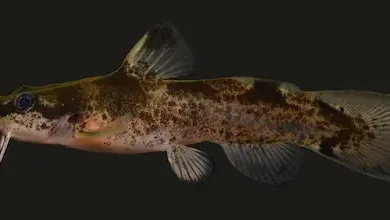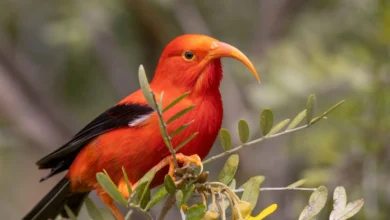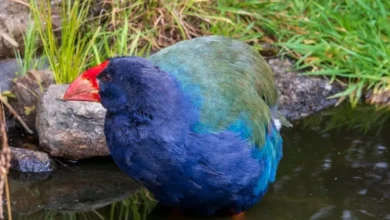Bachman’s Warbler: The Lost Jewel of the Avian World
Extinction, Habitat, and Conservation Efforts
1. Introduction
Bachman’s Warbler (Vermivora bachmanii) was once one of North America’s most elusive and beautiful songbirds. Sadly, it is now believed to be extinct, with the last confirmed sightings dating back to the mid-20th century. This small, brightly colored warbler inhabited the southeastern United States and was named after Reverend John Bachman, a naturalist who first documented it.
The story of Bachman’s Warbler is a cautionary tale about habitat destruction, human encroachment, and the irreversible consequences of environmental neglect. Despite its likely extinction, some ornithologists hold out hope for its rediscovery, making it a subject of ongoing fascination.
2. Taxonomy and Naming
-
Scientific Name: Vermivora bachmanii
-
Family: Parulidae (New World Warblers)
-
Named After: Reverend John Bachman (1790–1874), who provided specimens to John James Audubon.
-
First Described: Audubon officially described the species in 1833.
Bachman’s Warbler was closely related to other Vermivora warblers, such as the Blue-winged Warbler and Golden-winged Warbler. Genetic studies suggest it may have hybridized with these species before its decline.
3. Physical Description
Bachman’s Warbler was a small, vibrant bird with distinct sexual dimorphism:
Male:
-
Plumage: Bright yellow throat and breast, olive-green back, gray crown.
-
Face: Black lores (area between eyes and bill) and faint black streaks on the sides.
-
Size: ~4.3 inches (11 cm) in length, wingspan of ~7 inches (18 cm).
Female:
-
Plumage: Duller yellow, with olive-green upperparts and lighter underparts.
-
Distinct Feature: Lack of black facial markings compared to males.
Both sexes had sharp, pointed bills adapted for insectivory.
4. Habitat and Distribution
Breeding Range:
-
Primarily the southeastern U.S. (South Carolina, Georgia, Florida, Alabama, Mississippi, Arkansas, Missouri).
-
Preferred bottomland hardwood forests and swamps with dense undergrowth.
Wintering Range:
-
Cuba and possibly the Isle of Pines.
-
Some unverified reports from the Bahamas and Hispaniola.
Habitat loss due to logging and agricultural expansion played a major role in its decline.
5. Behavior and Diet
-
Foraging: Actively gleaned insects from foliage, similar to other warblers.
-
Diet: Primarily insects (beetles, caterpillars, spiders) and occasionally berries.
-
Song: A high-pitched, buzzy trill, described as “zeet-zeet-zeet-zeet.”
Unlike some warblers, it was not highly migratory over long distances, making it more vulnerable to localized habitat destruction.
6. Breeding and Nesting Habits
-
Nesting Season: April to July.
-
Nest Construction: Built low in shrubs or cane thickets, made of leaves, grass, and spider silk.
-
Clutch Size: 3–5 eggs, white with brown speckles.
-
Parental Care: Both parents fed the young, but nest parasitism by Brown-headed Cowbirds may have contributed to its decline.
7. Decline and Extinction
Causes of Decline:
-
Habitat Destruction:
-
Clearing of bottomland forests for agriculture (especially cotton).
-
Drainage of swamps.
-
-
Climate Changes:
-
Alteration of migratory stopover sites.
-
-
Hunting and Collection:
-
Early 20th-century specimen collection for museums.
-
Last Confirmed Sightings:
-
1958 (South Carolina) – Last breeding record.
-
1962 (Louisiana) – Last reliable sighting.
-
1988 (Cuba) – Unconfirmed report.
The U.S. Fish and Wildlife Service declared it endangered in 1967 and officially proposed its extinction in 2021.
8. Possible Sightings and Rediscovery Hopes
Despite its presumed extinction, occasional unverified reports emerge:
-
2000s: A few claimed sightings in Arkansas and Louisiana.
-
eBird Reports: Some amateur birders list it, but none are verified.
Scientists use environmental DNA (eDNA) techniques to search for traces in former habitats, but so far, no conclusive evidence has been found.
9. Conservation Lessons Learned
The extinction of Bachman’s Warbler highlights critical conservation failures:
-
Importance of Habitat Protection: Early intervention could have saved it.
-
Need for Better Monitoring: Many species decline unnoticed until it’s too late.
-
Climate and Land-Use Policies: Sustainable forestry and wetland preservation are crucial.
10. Conclusion
Bachman’s Warbler remains a symbol of lost biodiversity. While hope for its rediscovery lingers, its story serves as a stark reminder of humanity’s impact on fragile ecosystems. Protecting remaining endangered species requires urgent action—before they, too, fade into history.




